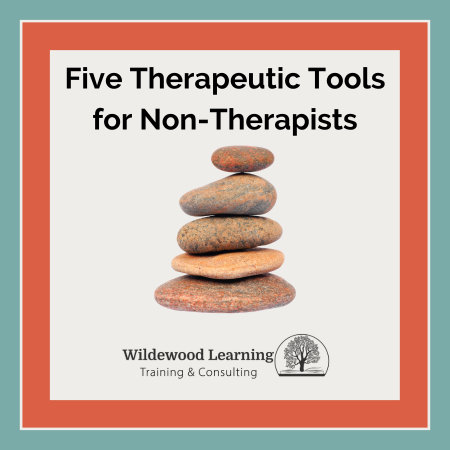Five Therapeutic Tools for Non-Therapists
I have been in many therapists ‘, social workers’, or mental health professionals’ offices over the years. I mostly attended appointments with family members, as well as a few for myself. It hasn’t always been easy to get an appointment or set up a screening when needed, and that is only going to get more difficult in the United States.
Living in rural America presents a unique challenge, with a staggering 160 million people in rural areas grappling with a severe shortage of mental health professionals. The need for over 8,000 additional providers nationally is a pressing issue that demands immediate attention. (commonwealthfund.org)
I live in rural America, a small community on the Canadian border. We are fortunate to have a community hospital, as the next closest hospital would be 60 miles away. We are lucky to have a behavioral health department in the hospital, staffed with several therapists and social workers. I hope that our luck doesn’t run out.
When working with individuals who serve children and youth, I share that you don’t have to be a therapist to be therapeutic with the people you serve. However, you do need to have a few skills and knowledge in your toolbox to draw upon so that you can help children and youth.
Two weeks ago, I had the opportunity to attend a conference where Dr. Bruce Perry discussed this very topic. I have been a fan of Dr. Perry’s ever since I read his book, “The Boy Who was Raised as a Dog,” and his more recent book with Oprah Winfrey, “What Happened to You?” He has worked with children who have experienced trauma for many years.
Here are five key takeaways I gleaned from his presentation.
- Be Relationally Present
Put down the phone and meet the needs of the children who are in your presence with intention. Provide them with the attentive and kind interactions needed in the moment. It is in the small positive interactions that create a safe and connected environment for healing to occur.
- Provide Psychoeducation
If you interact with children, families, or colleagues, it is essential to understand the normal stress response. You need to recognize the response to stress in yourself and others. Often, in children, the stress response manifests as aggression, hyperactivity, or shutdown. Children in a stressful situation are not selecting their behaviors; they are reacting to fear, leading to behaviors labeled as challenging. Punishment and compliance don’t work; understanding and helping to mitigate the stressors work.
- Teaching Sensory Support
You can teach simple, easy routines to children and families to help reduce stressors. Activities that engage the physical are the best, such as knitting, running, sculpting, and playing musical instruments. This is why the arts and outdoor recess are so important, not just in elementary age, but at all ages. These are opportunities to provide physical and emotional regulation.
- Agency and Support
Encouraging understanding that you have agency in taking care of your basic needs (sleep, exercise, nutrition, connection) so that you can be your best self to support others. When serving at full capacity as an educator, social worker, or childcare provider, it is essential to understand the impact you have on the youth and children in your care. When you take care of your own needs, you can then create environments that feel safe for children and families to attend to their own needs.
- Community Engagement
Positive Childhood Experiences (PCEs) can significantly lessen the effects of Adverse Childhood Experiences (ACEs). The seven actions that support PCEs are all relationally based, emphasizing the profound impact of individual relationships on a child’s world. Whether you’re a coach, a teacher, a neighbor, a friend’s parent, or a youth leader, your role in creating space for children and youth to have positive and safe relationships is invaluable. Every adult who fosters such relationships is making a therapeutic difference in a child’s life.
If you are implementing any of these five strategies in your home, workplace, or community, you are playing a crucial role in supporting the mental health of children and youth. Dr. Perry’s talk reveals that healing from trauma is not primarily about clinical interventions, but about rebuilding human connections. Our modern world has systematically dismantled the relational networks that historically supported human development, creating environments of stress and disconnection. The brain, an incredibly complex organ, thrives on predictable, moderate challenges and consistent, attuned interactions.
This is not intended to discourage seeking professional therapy when needed, but rather to emphasize the vital role of community interactions in fostering healing. Actual therapeutic work occurs not in isolated therapy sessions, but in communities where individuals—parents, neighbors, coaches, and educators—understand how to be present, responsive, and supportive. By recognizing that resilience is built through small, repeated moments of safety and connection, we can transform our approach to mental health from an individual medical model to a collective, compassionate community strategy.

